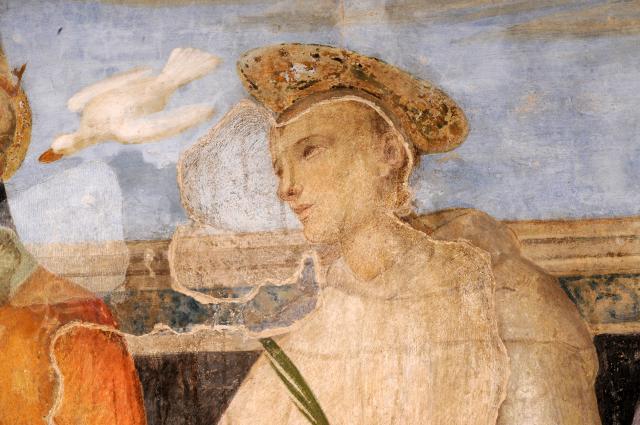Restoration work on the San Severo fresco
San Severo chapel

Over the course of time the San Severo fresco has suffered considerable damage, the most serious of which occurred (in 1748 to 1751) when it was decided to demolish the 15th century church in which it was originally painted. In 1860 the monastery was deconsecrated and became property of the city of Perugia which then, in 1872, commissioned Nicola Consoli of Rome to conduct a general restoration of the fresco. The latter’s operation involved an extensive repainting effort that was severely criticized by Giovanni Battista Cavalcaselle, at that time a renowned authority on art restoration. The Roman painter had in fact painted over most of the figures both in the portion painted by Raphael and in that painted by Perugino; what’s more he also added a great deal of plaster-based stucco work to the walls which later caused extensive damage to the whole fresco due to water infiltration.
The condition of the artwork thus continued to deteriorate until, in 1930, it was suggested that the fresco be completely detached. This was prevented by Achille Bertini Calosso the Italian Superintendent of Medieval Art who commissioned new general restoration and consolidation work from Gualtiero De Bacci in 1932. Due to the use of unsuitable fixatives, this operation, which made the fresco’s surface impermeable, only worsened the problem of humidity within the supporting wall. Things remained thus until 1974 when the first problem-solving restoration work, drawing on the most recent theory and techniques, was begun by the restoration expert Carlo Giantomassi, overseen by Francesco Santi. This operation initially focussed on identifying and remedying the causes of the damaging water infiltration affecting the wall and then in July 1976 the actual restoration work on the fresco began.
Restoration activity consisted in an extensive and meticulous cleaning operation which laid bare the original surface layer of the fresco. Next, all of Consoni’s arbitrary additions and plaster-based stucco work were removed from the portion completed by Raphael thus revealing the artist’s refined preparation and brushwork. Francesco Santi decided, in accordance with the conservation theory that artworks should reflect the effects of the passage of time, that Consoni’s repainting work on Perugino’s San Gregorio and San Bonifacio should be retained but made clear by adding a fine incision around its contours. Thanks to this restoration work conducted in the 1970s it’s now possible to identify and study each individual day’s work, amounting to around thirty, completed by Perugino and Raphael in order produce the fresco.